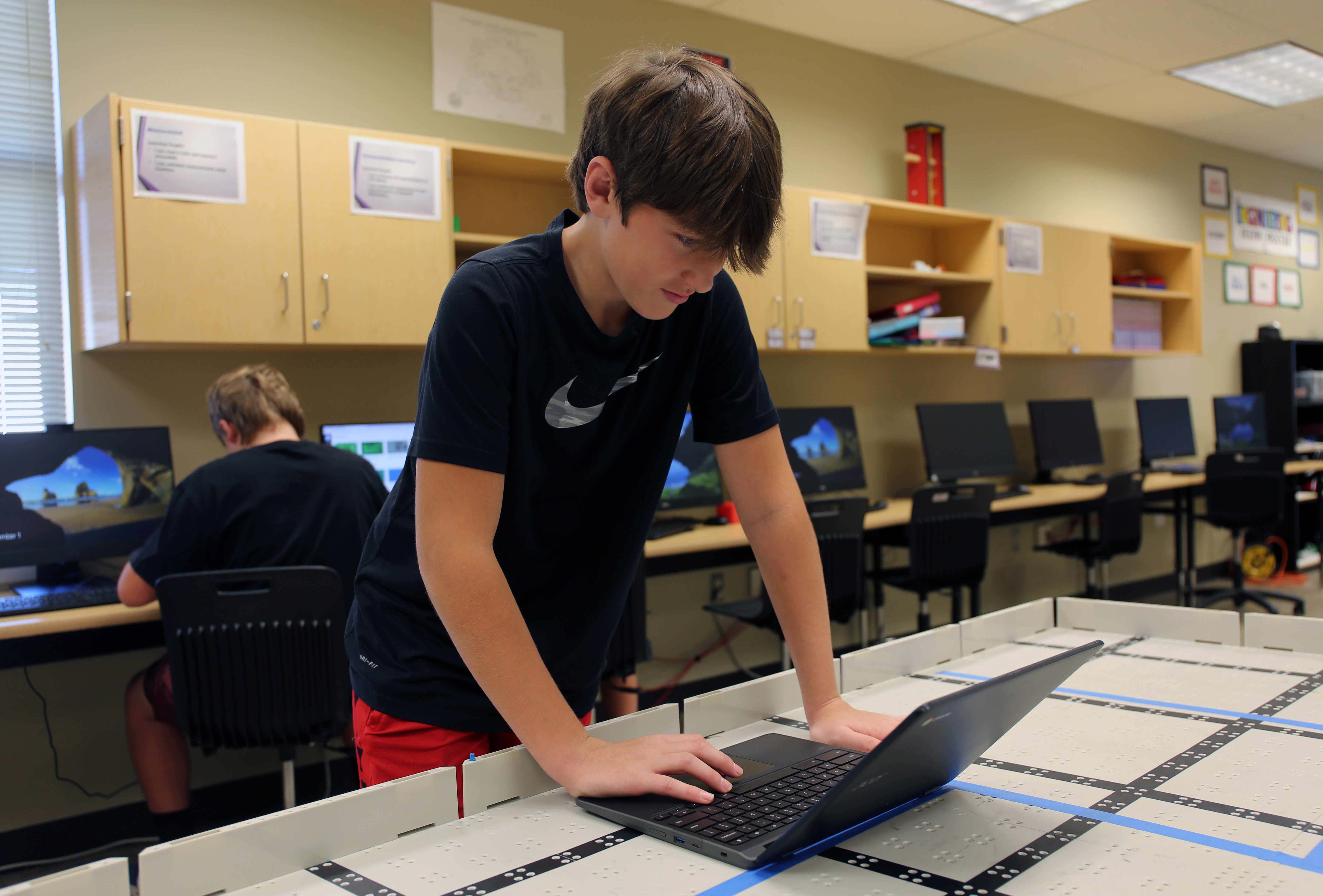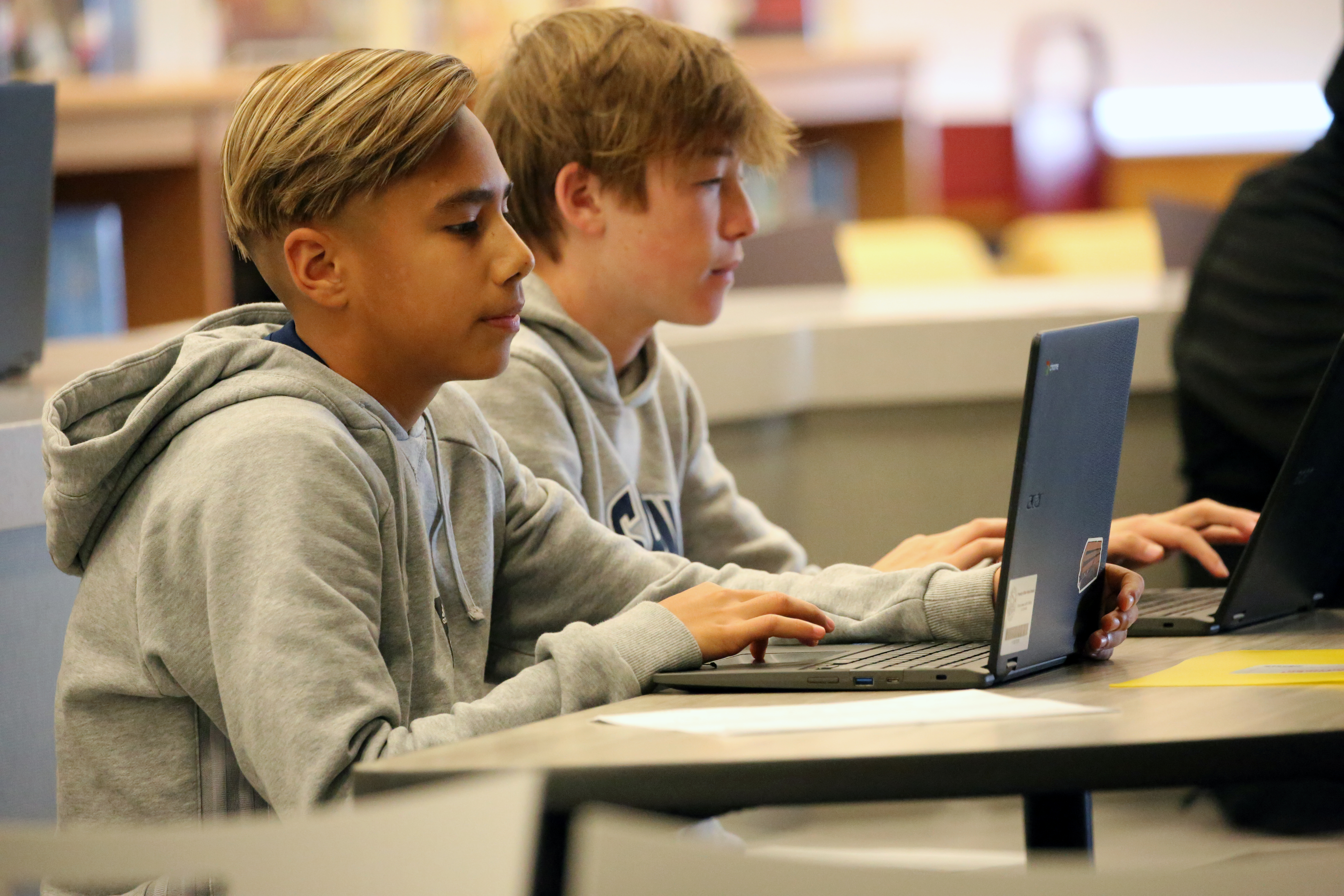Learning Connection
Page Navigation
Blue Valley middle schoolers learn about digital citizenship with engaging and interactive lessons

At the beginning of the 2022-23 school year, Overland Trail Middle assistant principal Nicole Orrick began to think about how she could help students become good digital citizens.
Middle school is a transition period for kids as they learn more about themselves, take on more responsibility and become more exposed to technology.
“Communication is increasingly common and important to maintain connections, but as middle schoolers, I don’t feel like they always know the correct and appropriate ways to go about communicating with one another,” Orrick said.
Ever-present social media outlets add to the need to teach young adults how to communicate and use technology appropriately.
Orrick reached out to Blue Valley’s Blended Learning team to find out how middle schools could engage students in learning about Digital Citizenship that was interactive and engaging.
The Blended Learning team utilized topics and lessons provided by Common Sense Media to put together a guide for middle schools to teach topics quarterly.
Blue Valley middle schools have always taught digital citizenship but this year the lessons are consistent in all middle schools. Overland Trail Middle will implement the lessons during students’ flex class.
Topics include balance and well-being, privacy and security, digital footprint and identity, relationships and communication, cyberbullying, digital drama and hate speech, and news and media literacy.
While the topics remain the same at each grade level, the lessons associated change. On the topic of balance and well-being, 6th graders learn about “Finding balance in a digital world”; 7th graders learn about “My Media Use: A personal challenge”; and 8th graders dive into “Digital Media and Your Brain.”
Orrick said all of the lessons are equally important, but the topic she thinks the social media piece will be the most powerful for middle schoolers.
“Their brains aren’t developed enough to grasp what social media can do to a person or the long-term effects of what you say about people online,” Orrick said. “That piece has been really hard to navigate, and I think the more that we can partner with families to teach about the online safety piece and the responsibility piece, the better off we’re all going to be.”
The lessons are twofold and require more than just work inside the classroom. Families working with their kids at home is important to ensuring the teaching continues. Each lesson has an associated social-emotional learning connection and multiple at-home resources.
“It’s that buy-in from parents because we can’t do it all ourselves,” Orrick said. “When we’re covering cyberbullying, we can send that information out to parents and say, ‘This quarter we are really honing in on cyberbullying prevention, here are materials your student has been given and we’ve addressed. Please have these conversations with your kiddos at home so we’re all on the same page and we’re all doing this work together.’”

Digital Citizenship lessons, especially among middle school-aged students, are vital as they become more exposed to technology through personal and school devices. When teachers incorporate Blended Learning into their classes, they reinforce the idea of incorporating purposeful technology into instructional design.
Casey Krouse, district coordinator for Blended Learning, said for adults who didn’t have access to devices like kids do now, it can be difficult to maintain a healthy balance with technology.
“I think if we can train them early and expose them to tools to help them stay balanced, they will probably be better at it as adults,” Krouse said.
Orrick said as people get older, it becomes important to know what happens and is posted online isn’t easily erased.
“Students get more and more freedom on these devices as they get older, and the amount of information and resources they have access to is really limitless,” Krouse said. “Because there are so many things out there that are potentially not valuable, or even harmful, we have to be able to give them tools just like we would any other core content.”
If you want to learn more about digital citizenship topics and other technology related resources, visit the Blue Valley Digital Citizenship resource page.

